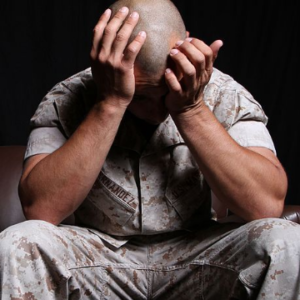PTSD and Cranial-Sacral Therapy
Lately, there has been a lot of much-deserved attention focused on our veterans that have died in various wars. Unfortunately, those veterans that make it back home often deal with physical, mental, and emotional disorders that linger through the rest of their lives. PTSD is one of those disorders that has only been understood, acknowledged, and treated in recent years.
I have personally treated veterans with PTSD successfully in my office using Cranial-Sacral Therapy (CST), some of the gentle Myo-fascial techniques included in Direct-Indirect Technique classes, and the techniques described and practiced in the DIT class for Special Needs Clients. Several of these veterans experienced a profound relaxation and lessening of anxiety, and some had dramatic emotional releases that helped them get past their symptoms.

One combat veteran client had such an intense emotional response to CST and DIT neck work over eight sessions that he was able to get a surgery that the VA had previously refused to do, because the cerebrospinal fluid was so blocked they thought the operation could be fatal. After the CST sessions and the surgery, he soon was able to go back to work and move on in a much more positive direction with his life. It was a very fulfilling experience when he walked back into my office a couple of months after the surgery as happy and grateful as can be.
Post-Traumatic Stress Disorder can affect anyone experiencing a traumatic event. It is very common among combat veterans, though in past years it was often called “shell shock” or “combat fatigue”. Symptoms can include distressing dreams, vivid flashbacks, tuning out certain memories, being easily startled, difficulty relating to other people, and consistent feelings of fear, anger, horror, and even guilt or shame. After they get back into society, many PTSD sufferers wind up living homeless, getting into substance abuse, and experiencing depression.
There are many different conventional treatments for PTSD. Medications such as anti-depressants and anti-anxiety drugs are often used. Psychotherapy techniques such as cognitive therapy and EMDR (Eye movement desensitization and reprocessing) can be very useful.
In recent years, several Complementary and Alternative Medicine (CAM) techniques have been found to be helpful for PTSD sufferers. These include CST, Massage, Acupuncture, Tai Chi, and others. There have been several research studies demonstrating successful treatment of PTSD using CST. The Upledger Institute has some great resources listing studies where PTSD was treated using CST techniques:
https://www.upledger.com/ptsd/
Click on CE Class Schedule above to see upcoming ROLMT Cranial-Sacral Therapy and Direct-Indirect Technique classes. The Upledger Institute, which is not associated with ROLMT, also has wonderful instructors and classes that teach a wide variety of techniques that can help people with PTSD and many other such maladies.
